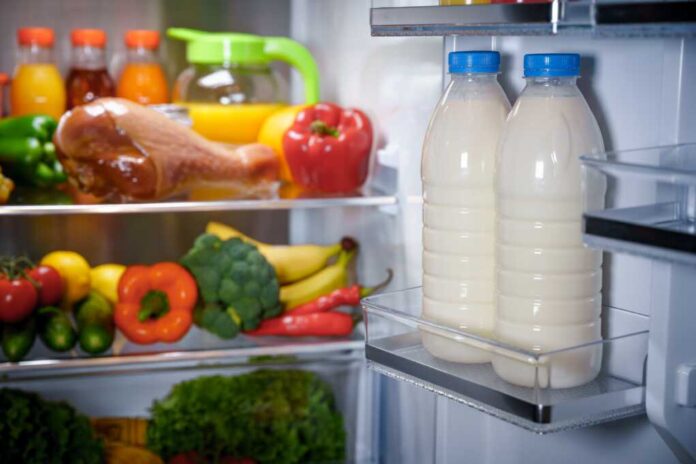
Storing milk in the refrigerator door could be a recipe for disaster, risking both safety and unnecessary waste.
Story Snapshot
- Improper food storage in the fridge can lead to spoilage and foodborne illnesses.
- Recent guidelines emphasize keeping milk, eggs, and meat away from the fridge door.
- Consumers are advised to follow safety recommendations to maximize food shelf life.
- Appliance manufacturers are designing fridges with enhanced storage features.
Understanding Refrigerator Storage Risks
Storing food improperly in the refrigerator can lead to serious consequences, such as spoilage and foodborne illnesses. Recent consumer education efforts emphasize the importance of proper food placement within the fridge. Items like milk, eggs, and raw meat are especially vulnerable when stored in the fridge door due to frequent temperature fluctuations. This practice increases the risk of spoilage and illness, prompting food safety authorities to issue updated guidelines for consumers.
From eggs to milk, learn about the five foods that should never be stored in the door of the refrigerator. https://t.co/n6EbMILXFP
— EatingWell Magazine (@EatingWell) August 17, 2025
The Science Behind Food Placement
Food safety experts recommend specific storage practices based on the science of refrigeration. The coldest part of the fridge is typically the back of the main compartment, making it the ideal spot for perishable items such as milk and eggs. In contrast, the refrigerator door is the warmest area and should be reserved for items with a longer shelf life, such as condiments and drinks. Understanding these temperature zones helps consumers maximize food safety and shelf life.
Advancements in refrigerator design have led to the inclusion of features like crisper drawers and temperature-controlled zones. These innovations help maintain optimal humidity and temperature for specific food types, reducing the risk of spoilage. Appliance manufacturers are responding to consumer demand for safer, more intuitive storage solutions, further emphasizing the importance of proper food placement in the fridge.
Watch: Is Storing Milk in the Fridge Door Safe?
Impact on Consumers and Industry
The push for better refrigerator storage practices has both short-term and long-term implications for consumers. Improved food safety reduces the risk of spoilage and illness, leading to less food waste and potential savings. In the long term, these practices could result in a reduction in foodborne illness rates and increased consumer confidence in food safety. The appliance industry may continue to innovate, offering products that support these guidelines and enhance user convenience.
The focus on consumer education and updated guidelines by food safety authorities underscores the importance of following best practices. By adopting these recommendations, consumers contribute to improved health outcomes and food security, reinforcing the role of public health regulation and education in everyday life.
Sources:
High Speed Training
Kansas State University Research and Extension
FoodSafePal
Portland.gov
StateFoodSafety


















